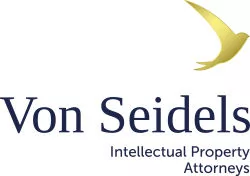Stem cells are a class of biological cells that are characterised by their ability to replicate and develop into the various tissue types of the body. Whereas adult stem cells act to repair damaged tissue and regenerate cells during natural biological turnover, embryonic stem cells are able to differentiate into any embryonic tissue, a condition known as "pluripotent". Adult stem cells can be extracted from a range of sources, notably, bone marrow, adipose tissue and blood, but embryonic stem cells can only be extracted from a developing human embryo, which can result in its destruction. This latter feature has given rise to the controversy surrounding embryonic stem cell research.
The interest in embryonic stem cells is based on their ability to create or regenerate human tissues and organs from cells prepared in a lab. When exposed to the right biological conditions, these cells have the potential to heal damaged heart and spinal cord tissue, reverse diabetes, and treat a range of cancers.
The controversy surrounding the source of stem cells has been ongoing for many years. Early work sourced embryonic stem cells from aborted foetuses and embryos donated by couples undergoing IVF treatment. This led to considerable opposition prompting George W. Bush to issue an executive order in 2001 limiting research in the US to existing cell lines, although this was subsequently reversed by Barack Obama in 2009. In several countries, inventions which are based on embryonic stem cell research where embryos were destroyed are not patentable for ethical reasons. However, the question of human embryo destruction may no longer be an issue since the discovery of a method for reprogramming human adult stem cells to a pluripotent state. This has the potential to negate the need for obtaining stem cells from embryos and offers alternative possibilities for disease treatment.
Although this development means that ethical considerations relating to embryo destruction may no longer be a prohibitive factor in obtaining patent protection for stem cells, protecting the intellectual property (IP) rights of commercial stem cell products can still be complicated. This is particularly so in defining the scope of the claims of a patent application. Relative to pharmaceuticals, proteins and nucleic acids, which have defined structures and are easily characterised, stem cells are by their nature complex and difficult to define. Under different culture conditions, any given stem cell can produce a range of unique cell lines and express widely diverse biological markers. Drafting claims for such inventions and convincing a patent office that such an invention is novel can be significant challenges.
An additional element for patentability is enablement. This requires that the patent specification provide sufficient information for a person skilled in the art to be able to replicate the claimed invention. Method claims describing isolation/extraction of stem cells or their use in drug screening usually do not pose a problem in this regard. Clinical applications of stem cells, however, can be difficult to successfully reproduce due to the unpredictable nature of the cells and their therapeutic outcomes.
The impact of IP on stem cell research has recently come under the spotlight in the US with the non-profit advocacy group, Consumer Watchdog, challenging the legality of several stem cell patents held by the University of Wisconsin-Madison. The advocacy group wants an appeals court to invalidate the patents based on their similarity to previous work. They also want an earlier US Supreme Court ruling limiting ownership rights of human genes to apply to stem cells. The motive behind the challenge is based on the opinion that these patents hinder US stem cell research. Consumer Watchdog says they drive up research costs by requiring companies and some academics to pay considerable licensing fees to the university and question whether such a barrier to entry is in the best interests of society, particularly given the huge potential for new stem cell-derived therapies.
Managing the protection of IP rights, maintaining commercial viability, and enabling access to novel medical therapies are all important policy goals to be pursued in order to achieve the greatest societal benefit from stem cell technologies.
The content of this article is intended to provide a general guide to the subject matter. Specialist advice should be sought about your specific circumstances.

